
Trysil: Norway's Winter Wonderland
Discover Trysil, Norway's premier destination for skiing, hiking, and year-round outdoor adventures in a stunning natural setting.
Nestled in the heart of Norway, Trysil is a haven for winter sports enthusiasts and nature lovers alike. Renowned for its expansive ski resorts, Trysil boasts over 70 kilometers of well-groomed slopes catering to all levels of skiers and snowboarders. The modern lift system ensures quick and easy access to the pistes, allowing visitors to make the most of their time on the snow. Beyond skiing, Trysil offers a plethora of activities that highlight its stunning natural beauty. Cross-country skiing trails weave through serene forests, while dog sledding and snowshoeing provide unique ways to explore the snowy landscape. In the summer, Trysil transforms into a paradise for hikers and mountain bikers, with numerous trails that offer breathtaking views of the surrounding mountains and valleys. The charming village of Trysil is equally inviting, with cozy accommodations, delightful restaurants, and a welcoming atmosphere. Local eateries serve up traditional Norwegian cuisine, giving visitors a taste of the region's culinary heritage. Whether you're seeking adventure on the slopes or relaxation in a picturesque setting, Trysil promises an unforgettable experience in one of Norway's most beautiful destinations.
Local tips in Trysil
- Book ski passes and equipment rentals in advance to avoid long lines and ensure availability.
- Visit during the weekdays if possible, as weekends can be crowded with locals and tourists alike.
- Take advantage of the free ski bus that operates between the village and the slopes for easy transportation.
- Explore the Høyt & Lavt Climbing Park in the summer for a fun family-friendly adventure.
- Don't miss the Northern Lights in winter; check the aurora forecast and find a dark spot away from village lights.
Trysil: Norway's Winter Wonderland
Nestled in the heart of Norway, Trysil is a haven for winter sports enthusiasts and nature lovers alike. Renowned for its expansive ski resorts, Trysil boasts over 70 kilometers of well-groomed slopes catering to all levels of skiers and snowboarders. The modern lift system ensures quick and easy access to the pistes, allowing visitors to make the most of their time on the snow. Beyond skiing, Trysil offers a plethora of activities that highlight its stunning natural beauty. Cross-country skiing trails weave through serene forests, while dog sledding and snowshoeing provide unique ways to explore the snowy landscape. In the summer, Trysil transforms into a paradise for hikers and mountain bikers, with numerous trails that offer breathtaking views of the surrounding mountains and valleys. The charming village of Trysil is equally inviting, with cozy accommodations, delightful restaurants, and a welcoming atmosphere. Local eateries serve up traditional Norwegian cuisine, giving visitors a taste of the region's culinary heritage. Whether you're seeking adventure on the slopes or relaxation in a picturesque setting, Trysil promises an unforgettable experience in one of Norway's most beautiful destinations.
When is the best time to go to Trysil?
Iconic landmarks you can’t miss
Radisson Blu Resort, Trysil
Discover the ultimate retreat at Radisson Blu Resort, Trysil—your gateway to year-round adventure in Norway's breathtaking landscapes.

Norwegian Forestry Museum
Explore the Norwegian Forestry Museum: A captivating journey through Norway's forestry heritage, nature, and sustainable practices for all ages.

Trysil Bike arena
Experience the ultimate cycling adventure at Trysil Bike Arena, Norway's premier destination for cyclists of all levels amidst breathtaking landscapes.

Knettsetra
Experience exquisite dining at Knettsetra, Trysil's culinary gem offering fresh, locally sourced dishes in a cozy atmosphere.

Restaurant Skihytta Trysil
Experience authentic Norwegian cuisine with stunning mountain views at Restaurant Skihytta Trysil, a culinary gem in the heart of Norway.

SkiStar, Norge
Discover SkiStar Trysil, Norway's largest ski resort, where stunning slopes, winter activities, and cozy lodges await adventurers of all ages.

Glomdalsmuseet
Explore Glomdalsmuseet in Elverum for an enriching journey through Norway's cultural and historical heritage.

Trysil Ski Center
Experience the thrill of winter sports at Trysil Ski Center, Norway's ultimate skiing destination with breathtaking views and diverse slopes.
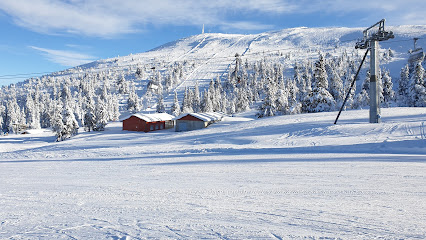
Trysilfjellet
Experience the thrill of winter sports and the beauty of nature at Trysilfjellet, Norway's premier ski resort, offering adventure for all ages.
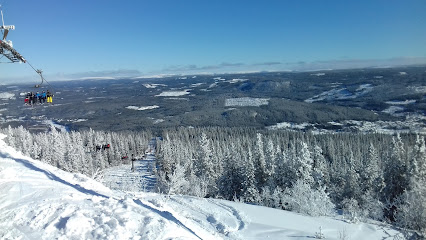
Happy Faces
Discover Happy Faces in Trysil: A cozy restaurant offering delicious burgers, sushi, and pub favorites amidst stunning Norwegian landscapes.

Trysil skishop
Experience the ultimate outdoor adventure at Trysil Skishop, your go-to destination for ski, bike, and fishing gear rentals in stunning Trysil, Norway.
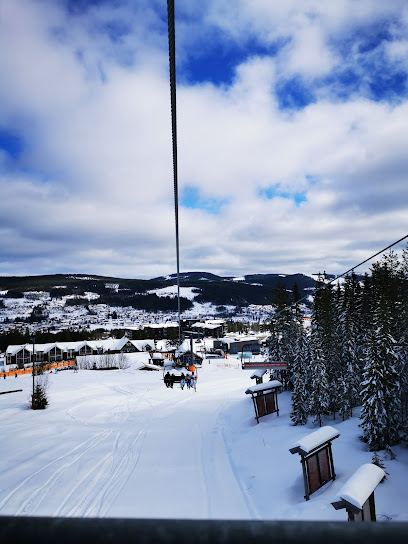
Fulufjellet
Explore Fulufjellet, a breathtaking ski resort in Norway, offering thrilling winter sports, cozy accommodations, and stunning natural beauty year-round.

Trysil-Knut Hotel
Experience the perfect blend of comfort and adventure at Trysil-Knut Hotel, your gateway to Norway's breathtaking landscapes and outdoor activities.

Sæteråsen Hytter & Camping Trysil (Trysil Fjell Camping )
Unwind in Nature's Embrace at Sæteråsen Hytter & Camping Trysil, Your Gateway to Outdoor Adventures and Scenic Beauty.
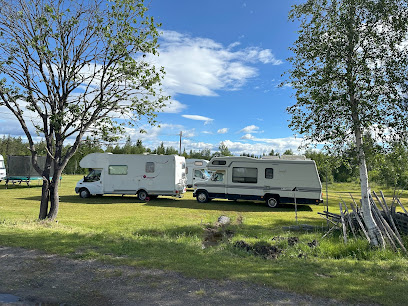
Furutangen
Discover the serene beauty of Furutangen, a perfect escape into nature that captivates with breathtaking landscapes and outdoor adventures in Norway.
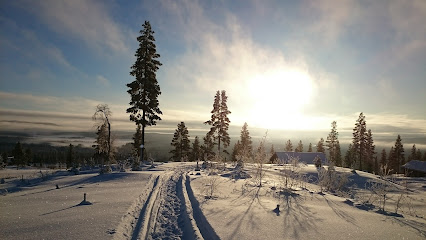
Unmissable attractions to see
Fulufjället National Park
Explore the breathtaking Fulufjället National Park, Sweden's natural gem featuring stunning waterfalls, diverse wildlife, and endless outdoor adventures.

Njupeskär Waterfall
Explore the breathtaking Njupeskär Waterfall in Fulufjället National Park, Sweden's highest waterfall surrounded by stunning nature and hiking trails.

Trysil Bike arena
Experience the ultimate cycling adventure at Trysil Bike Arena, where stunning trails meet breathtaking natural beauty in Norway.

SkiStar, Norge
Experience the best of winter sports at SkiStar in Trysil, Norway's premier ski resort with stunning landscapes and vibrant après-ski culture.

Trysil Ski Center
Discover the thrill of skiing and snowboarding at Trysil Ski Center, Norway's premier ski resort with stunning landscapes and family-friendly activities.

Trysilfjellet
Discover Trysilfjellet, Norway's premier ski resort, offering thrilling slopes, stunning views, and cozy après-ski experiences for all winter sports enthusiasts.

Fulufjellet
Discover Fulufjellet, Norway's ultimate ski resort, where breathtaking landscapes meet unforgettable outdoor adventures for every season.

Furutangen
Discover the breathtaking beauty and cultural charm of Furutangen, a hidden gem in Osen, Norway, perfect for nature lovers and adventure seekers.

Høyt & Lavt Klatrepark Trysil
Experience the thrill of climbing amidst Norway's stunning landscapes at Høyt & Lavt Klatrepark Trysil, perfect for adventurers of all ages.

Mountain King's Sledehundkennel
Experience the thrill of dog sledding and the beauty of Norway at Mountain King's Sledehundkennel in Trysil.

ØKSNES Falls
Experience the serene beauty of ØKSNES Falls, a captivating natural attraction near Elverum, perfect for nature lovers and tranquility seekers.

Christiansfjell Fortress
Explore Christiansfjell Fortress in Elverum, a historic landmark and war museum showcasing Norway's rich military heritage amidst breathtaking landscapes.

Skagsvola T-marked hike
Discover the breathtaking beauty of Norway on the Skagsvola T-marked hike in Trysil, where nature and adventure await every traveler.

Trysilfjellet Arena
Discover the exhilarating slopes and stunning landscapes of Trysilfjellet Arena, Norway's premier ski resort for winter adventures.

Støa kanal
Explore Støa Canal in Trysil, a captivating blend of stunning nature and rich historical significance waiting to be discovered.

Essential places to dine
Knettsetra
Experience exquisite Norwegian cuisine at Knettsetra in Trysil - where local flavors meet breathtaking mountain views.

Restaurant Skihytta Trysil
Discover the taste of Norway at Restaurant Skihytta Trysil - where traditional flavors meet stunning mountain views.

Bobbos Pizza & Grill
Experience delicious pizzas and Italian comfort food at Bobbos Pizza & Grill in Trysil – perfect for families and pizza lovers!

Restaurant Laaven 1790 AS
Experience authentic Norwegian cuisine at Restaurant Laaven 1790 AS in Trysil - where local flavors meet warm hospitality.

Peppes Pizza - Trysil
Discover delicious pizzas at Peppes Pizza in Trysil – perfect for families and adventurers seeking comfort food in Norway's stunning landscapes.

China Restaurant Trysil
Discover authentic Chinese flavors at China Restaurant in Trysil - where every dish tells a story of culinary tradition.

Bøes Spiseri - Pizzeria - Bar
Discover the flavors of Italy at Bøes Spiseri in Trysil – where delicious pizza meets vibrant nightlife.

Skipuben
Discover Skipuben in Trysil: A vibrant pub offering delicious food and drinks amidst Norway's breathtaking landscapes.

Happy Faces
Experience culinary diversity at Happy Faces in Trysil - from gourmet burgers to exquisite sushi in a cozy pub setting.

Barbacoa
Experience authentic American cuisine at Barbacoa in Trysil – where comfort food meets the charm of Norway's stunning landscapes.
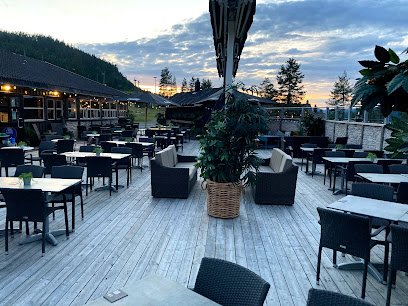
Restaurant Fjellroa
Experience exquisite Norwegian cuisine at Restaurant Fjellroa in Trysil - where local flavors meet breathtaking natural beauty.
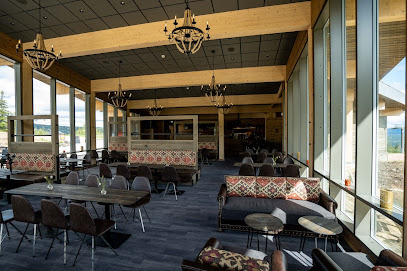
Bar Trysil
Discover Bar Trysil: A delightful gastropub offering exceptional Norwegian cuisine and lively atmosphere in beautiful Trysil.

TASTE mat & vinhus
Experience authentic Norwegian cuisine at TASTE mat & vinhus in Trysil – where local flavors meet exceptional wines.
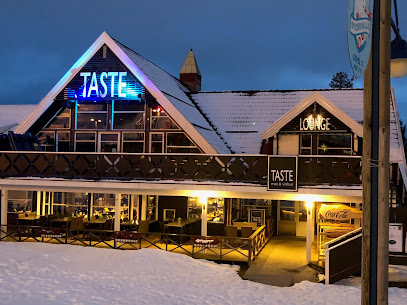
Trysil Hotell
Discover Trysil Hotell: A Cozy Retreat with On-Site Brewery and Bakery in Norway's Ski Capital.

La Pasteria Trysil
Experience authentic Italian cuisine in the heart of Trysil at La Pasteria - where every dish tells a story.
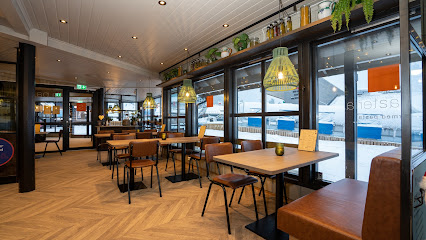
Markets, malls and hidden boutiques
REMA 1000 Trysil
Discover the convenience of REMA 1000 Trysil, your go-to grocery store for local flavors and essentials in the heart of Norway's stunning landscapes.

Trysilsenteret
Explore Trysilsenteret, a premier shopping destination in Trysil, Norway, offering diverse retail options and delicious dining experiences.

Coop Mega Trysil
Discover the best of local and international grocery shopping at Coop Mega Trysil, your go-to supermarket in the heart of Norway's adventure hub.

KIWI Trysil
KIWI Trysil: Your go-to grocery store for local flavors and essentials in the scenic town of Trysil, Norway.

Trysil skishop
Discover Trysil Skishop, your hub for ski rentals, bicycle services, and outdoor adventures in Norway's breathtaking Trysil region.
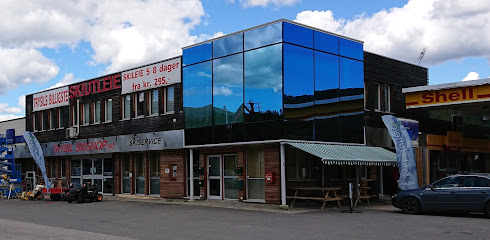
Sport 1 Sentrum Sport Trysil
Experience the thrill of outdoor adventures at Sport 1 Sentrum Sport Trysil, your ultimate hub for bicycles and sporting goods in Norway.

Nærbutikken Fageråsen Handel
Experience the best of Norwegian groceries and local specialties at Nærbutikken Fageråsen Handel in the heart of Trysil.

Trysil multirep
Discover the charm of Norwegian home goods and outdoor gear at Trysil Multirep, a must-visit for every traveler in Trysil.

Juls Sportshop
Explore the great outdoors with top-quality gear from Juls Sportshop, Trysil's leading destination for sporting goods and outdoor apparel.
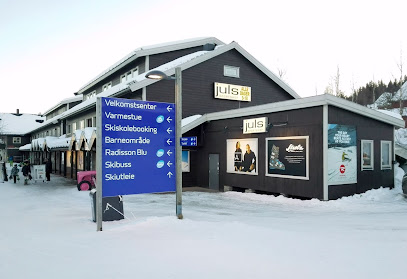
Europris Trysil
Explore Europris Trysil for unbeatable prices on groceries, home goods, and more in the heart of Norway's beautiful Trysil region.

KIWI Trysilfjellet
Explore Trysil with ease at KIWI Trysilfjellet, your go-to grocery store for local and international essentials, open daily for your convenience.

Fagmøbler Trysil
Explore Fagmøbler Trysil for quality furniture and decor that blends contemporary style with traditional Norwegian craftsmanship.

Skistarshop Trysil
Explore Skistarshop Trysil for top-notch skiing gear and apparel in Norway's largest ski resort, perfect for all winter sports enthusiasts.

Trysil Outlet
Discover top-notch sportswear at Trysil Outlet, your go-to destination for quality athletic gear in the heart of Norway.

Nille
Discover the charm of Norwegian home goods at Nille in Trysil, where quality meets style in every corner.

Essential bars & hidden hideouts
Knettsetra
Discover Knettsetra in Trysil, where exquisite local cuisine meets breathtaking natural landscapes for an unforgettable dining experience.

Restaurant Skihytta Trysil
Experience the flavors of Norway at Restaurant Skihytta Trysil, where traditional dishes meet stunning mountain views in an inviting atmosphere.

Bobbos Pizza & Grill
Discover the charm of Bobbos Pizza & Grill, where delicious pizza and Italian cuisine await in a family-friendly atmosphere in Trysil.

Restaurant Laaven 1790 AS
Experience the essence of Norwegian cuisine with a contemporary twist at Restaurant Laaven 1790 AS in scenic Trysil.

China Restaurant Trysil
Explore authentic Chinese flavors in the heart of Trysil, Norway, at China Restaurant Trysil, your go-to for delicious Asian cuisine.
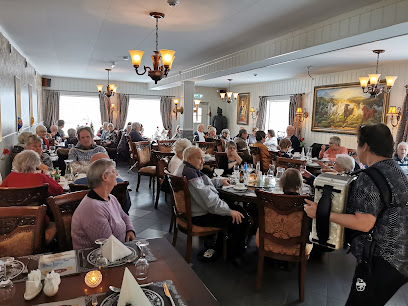
Bøes Spiseri - Pizzeria - Bar
Discover the perfect blend of delicious pizzas and lively bar ambiance at Bøes Spiseri in Trysil, Norway.

Skipuben
Experience the charm of Trysil at Skipuben, a cozy pub and restaurant serving local cuisine and a great selection of drinks in a warm atmosphere.

Happy Faces
Discover the best burgers and sushi in Trysil at Happy Faces – a culinary gem that delights every visitor with its diverse menu and vibrant atmosphere.

Barbacoa
Experience authentic American cuisine in the heart of Trysil at Barbacoa, where delicious flavors meet a cozy atmosphere.

Bar Trysil
Experience the best of Norwegian cuisine at Bar Trysil, a cozy gastropub in the heart of Trysil, perfect for locals and travelers alike.

Trysil Pizza og Grill AS
Discover the culinary delights of Trysil Pizza og Grill AS, where delicious pizzas and grilled specialties await in the heart of Norway.

TASTE mat & vinhus
Discover the culinary treasures of Trysil at TASTE mat & vinhus, where local flavors meet international cuisine in a cozy setting.

Kjoelen hotel
Discover comfort and charm at Kjoelen Hotel in Østby, where local cuisine meets stunning natural beauty.

glunot as
Experience the essence of Trysil at Glunot Bakery, where every bite is a taste of local tradition and passion for baking.

Trysil Hotell
Discover the perfect blend of comfort and local flavor at Trysil Hotell, where adventure meets relaxation in the heart of Norway.

Local Phrases about Trysil
-
- HelloHei
[hay] - GoodbyeHa det
[ha deh] - YesJa
[ya] - NoNei
[nay] - Please/You're welcomeVær så god
[ver sa good] - Thank youTakk
[tahk] - Excuse me/SorryUnnskyld
[oon-shil] - How are you?Hvordan har du det?
[vor-dan har doo deh] - Fine. And you?Bra. Og du?
[bra oh doo] - Do you speak English?Snakker du engelsk?
[snah-ker doo eng-elsk] - I don't understandJeg forstår ikke
[yay for-stor ee-neh]
- HelloHei
-
- I'd like to see the menu, pleaseKan jeg få se menyen, takk
[kan yay foh seh mayn-yen tahk] - I don't eat meatJeg spiser ikke kjøtt
[yay spee-ser ee-keh shut] - Cheers!Skål!
[skohl] - I would like to pay, pleaseJeg vil gjerne betale, takk
[yay veal yeer-neh beh-tah-leh tahk]
- I'd like to see the menu, pleaseKan jeg få se menyen, takk
-
- Help!Hjelp!
[yelp] - Go away!Gå vekk!
[goh vehk] - Call the Police!Ring politiet!
[ring poh-lee-tee-eh] - Call a doctor!Ring en lege!
[ring en lay-geh] - I'm lostJeg er borte
[yay air bor-teh] - I'm illJeg er syk
[yay air seek]
- Help!Hjelp!
-
- I'd like to buy...Jeg vil kjøpe...
[yay veal shur-peh] - I'm just lookingJeg bare ser
[yay bah-reh sair] - How much is it?Hvor mye koster det?
[vor mye kus-ter deh] - That's too expensiveDet er for dyrt
[deh air for deert] - Can you lower the price?Kan du senke prisen?
[kan doo sen-keh pree-sen]
- I'd like to buy...Jeg vil kjøpe...
-
- What time is it?Hva er klokka?
[vah air klok-ka] - It's one o'clockKlokken er ett
[klok-ken air et] - Half past (10)Halv ti
[halv tee] - MorningMorgen
[mohr-gen] - AfternoonEttermiddag
[et-tehr-meed-dag] - EveningKveld
[kvelld] - YesterdayI går
[ee gor] - TodayI dag
[ee dahg] - TomorrowI morgen
[ee mohr-gen] - 1En
[en] - 2To
[too] - 3Tre
[treh] - 4Fire
[fee-reh] - 5Fem
[fem] - 6Seks
[seks] - 7Sju
[shu] - 8Åtte
[oh-teh] - 9Ni
[nee] - 10Ti
[tee]
- What time is it?Hva er klokka?
-
- Where's a/the...?Hvor er...?
[vor air] - What's the address?Hva er adressen?
[vah air ad-dress-en] - Can you show me (on the map)?Kan du vise meg (på kartet)?
[kan doo vee-seh may (poh kahr-teh)] - When's the next (bus)?Når går neste (buss)?
[nar gor nes-teh (boos)] - A ticket (to ....)En billett (til ....)
[en bee-lett (teel)]
- Where's a/the...?Hvor er...?
History of Trysil
-
Trysil's history dates back to the early Stone Age, with archaeological finds indicating that the area was inhabited as early as 8,000 years ago. The early settlers were primarily hunters and gatherers, taking advantage of the rich natural resources provided by the dense forests and abundant wildlife.
-
During the medieval period, Trysil saw the development of agriculture as a significant part of its economy. By the 13th century, farming communities had established clearings in the forests and began cultivating the land. This era also saw the construction of the first wooden stave churches, which are iconic in Norway's architectural heritage.
-
The 17th and 18th centuries marked the boom of the timber industry in Trysil. The vast forests became a crucial resource, leading to extensive logging activities. Timber from Trysil was transported down the Trysil River, eventually making its way to European markets. This period significantly shaped the local economy and landscape.
-
Skiing has deep roots in Trysil's culture, with the first organized ski race taking place in 1862. The late 19th and early 20th centuries saw Trysil emerging as a prominent skiing destination. The establishment of Trysilfjellet Ski Resort in the 1960s further cemented its reputation, drawing enthusiasts from around the world.
-
World War II left its mark on Trysil, as it did on much of Norway. The area experienced German occupation, and local resistance groups were active in the region. The war period saw significant hardships, but also acts of bravery and resilience among the local population.
-
In the latter half of the 20th century and into the 21st, Trysil has evolved into a major tourism hub. The development of infrastructure, including hotels, restaurants, and modern ski facilities, has transformed it into Norway's largest ski resort. The blend of natural beauty, outdoor activities, and historical charm continues to attract visitors year-round.
Trysil Essentials
-
Trysil is located in the Innlandet county of Norway. The nearest international airport is Oslo Gardermoen Airport, approximately 160 kilometers away. From Oslo, you can take a bus or rent a car to reach Trysil. The journey typically takes around 2.5 hours by road. There are also direct bus services from Oslo Airport and Oslo city center operated by Trysilekspressen.
-
Once in Trysil, getting around is relatively easy. The town center is compact and walkable. For skiing and other activities, free shuttle buses operate during the winter season, connecting the main hotels and ski areas. Taxis are also available but can be expensive. Renting a car provides flexibility, especially if you plan to explore the surrounding areas.
-
The official currency in Norway is the Norwegian Krone (NOK). Credit and debit cards are widely accepted in Trysil, including in hotels, restaurants, and shops. It is advisable to carry some cash for smaller establishments or in case of emergencies. ATMs are available in the town center.
-
Trysil is generally a very safe destination for tourists. The crime rate is low, and violent crime is rare. However, standard precautions should still be taken. Keep an eye on your belongings in crowded places and avoid leaving valuables in your car. There are no specific high-crime areas targeting tourists in Trysil.
-
In case of an emergency, dial 112 for police, fire, or medical assistance. The nearest hospital is located in Elverum, about 70 kilometers away, but there is a local medical center in Trysil for minor health issues. It is advisable to have travel insurance that covers medical emergencies.
-
Fashion: Do dress in layers and wear appropriate outdoor clothing, especially in winter. Avoid wearing overly casual attire in fine dining establishments. Religion: Do respect local customs and traditions, although Norway is generally secular. Public Transport: Do be punctual and respectful on public transport. Don't eat or drink on public buses. Greetings: Do greet people with a firm handshake. Norwegians value personal space, so avoid hugging unless you know the person well. Eating & Drinking: Do try local dishes such as reindeer meat and Norwegian waffles. Don't leave a large tip; service charges are usually included.
-
To experience Trysil like a local, consider visiting during both winter and summer seasons to enjoy the full range of activities. In winter, skiing is the highlight, while summer offers mountain biking and hiking. Visit the local cafes and bakeries to enjoy Norwegian pastries. Engage in conversations with locals; they are usually friendly and helpful. Don’t miss the Trysilfjellet mountain for stunning views.
Trending Landmarks in Trysil
Nearby Cities to Trysil
-
Things To Do in Karlstad
-
Things To Do in Fredrikstad
-
Things To Do in Östersund
-
Things To Do in Trondheim
-
Things To Do in Örebro
-
Things To Do in Västerås
-
Things To Do in Molde
-
Things To Do in Uppsala
-
Things To Do in Ålesund
-
Things To Do in Linköping
-
Things To Do in Norrköping
-
Things To Do in Stockholm
-
Things To Do in Bergen
-
Things To Do in Gothenburg
-
Things To Do in Jönköping











